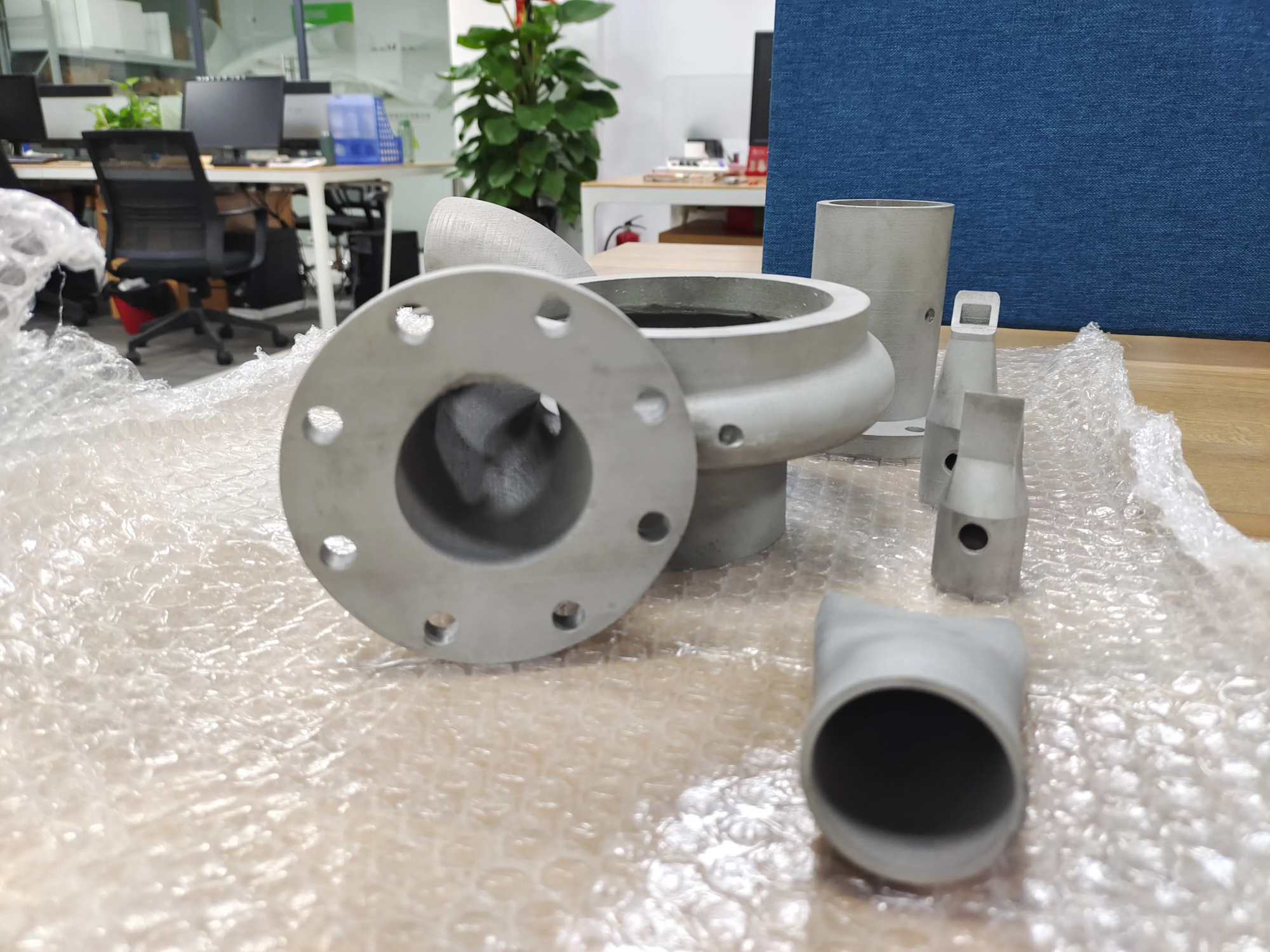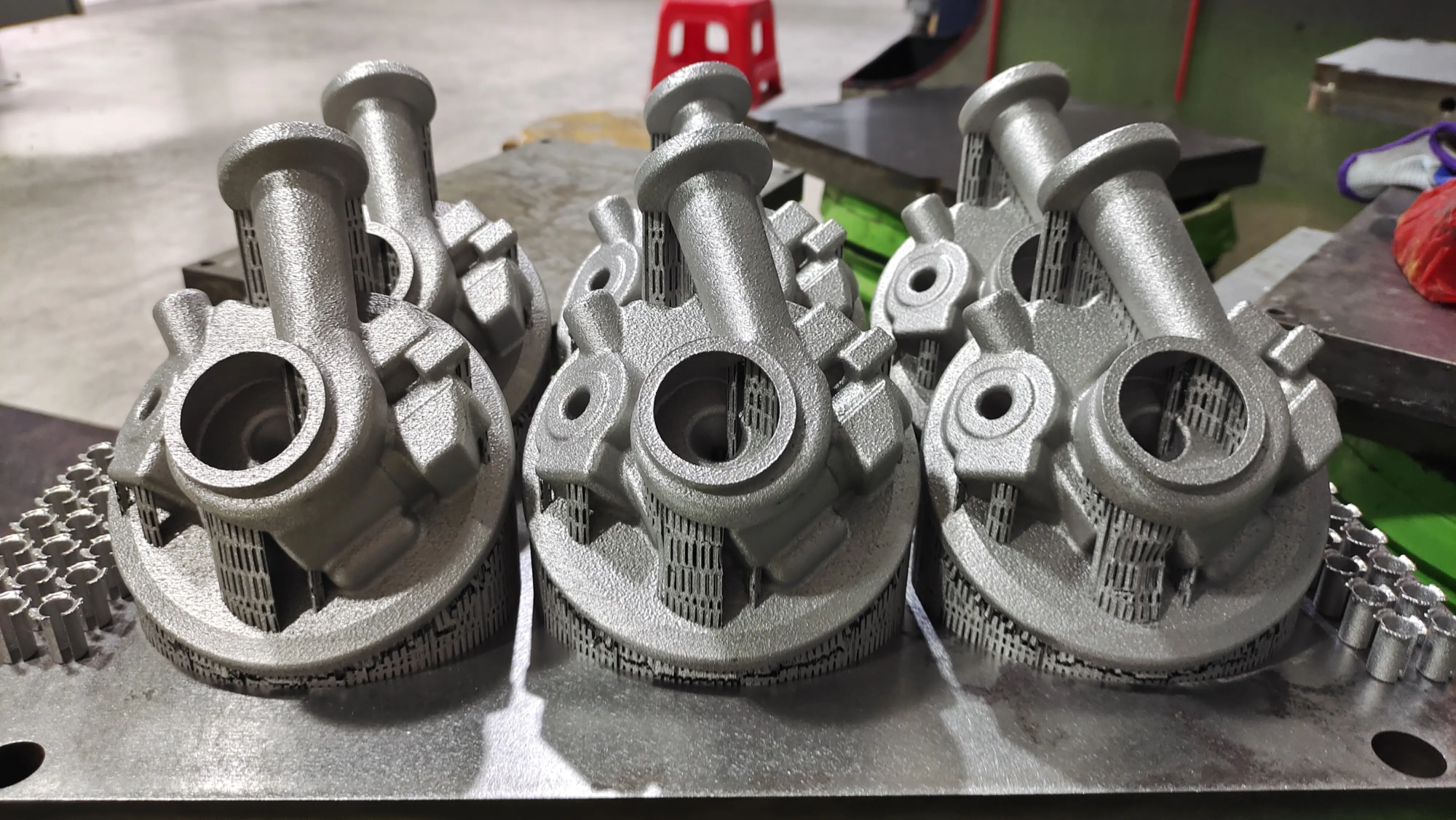Raising the Wheel: An Authoritative Guide to 3D Printing Center Cover
Those small, often overlooked discs at the core of the wheel (center cover) play a surprisingly important role in the overall aesthetic of your vehicle. OEM replacements can be ridiculous, limited edition designs may not be found, and custom creations are rarely an option…so far. Enter the world 3D printingand even revolutionized the details of how we handle car customization. This guide is in-depth design, manufacture and complete high-quality 3D printing center covers to explore the possibilities and processes involved.
Why consider 3D printed center cap?
- Final Customization: Unleash your creativity! Design caps have sophisticated patterns, unique logos, specific colors, textures, and even personalized text that cannot appear anywhere else. Make your wheels truly unique.
- Outdated and rare parts replacement: Found the perfect old-fashioned wheels, but lacking a hat? 3D scanning and printing can faithfully recreate discontinued or incredibly rare center caps.
- Cost-effective (especially for complex/unique design): While the cost of high-performance materials, it is very expensive to produce small, complex custom parts (such as hats) through injection molding. 3D printing avoids the complete cost of tools.
- Rapid prototyping: Test accessories, aesthetics and functionality quickly before committing to final production of materials.
- Material Innovation: Access to engineering-grade thermoplastics, even metals, far beyond the traditional covers, provides enhanced performance.
Navigation process: From idea to installation
1. Design and CAD modeling:
- Main things to note:
- Precision decoration: This is the most important thing. Measure the diameter and depth of the central hole of the wheel Incredible precise. Consider keeping any clips, tabs, or locking mechanisms you need. CAD software (such as Fusion 360, Solidworks, Freecad) is crucial.
- Wall thickness: Too thin risks breaking; too thick will add unnecessary weight/material. Designed to achieve structural integrity without bulk – usually 1.5mm to 3mm depending on material/design/size. Use rounded corners/bends to enhance corners.
- Exhaust/thermal management (optional but recommended): If your brakes generate significant heat, small ventilation holes or integrated gaps are included, especially for hats in the center or temperature-sensitive materials (such as many standard plastics).
- Surface finishes and details: Direct model texture, logo or pattern. Remember the difference in fidelity between FDM layer and SLA/SLM/MJF. Structural requirements must be expected to be supported.
- Install the system: Design clips, pressure friction, screw fixation or compatibility with existing OEM fixation devices.
- hint: 3D scanning of existing covers (even damaged hats) is an excellent starting point for reverse engineering and ensuring renovation accuracy – a service provided by many premium manufacturers.
2. Choose the right material: the performance is in line with aesthetics
Material selection is crucial, determining durability, aesthetics, heat resistance and stability:
- Engineering Thermoplastics (FDM, SLS, MJF):
- Based on nylon (PA11, PA12, PA12GB -SLS/MJF): Excellent toughness, fatigue resistance and moderate heat resistance. Ideal for the upper limit of functionality. PA12 Glass Fill (PA12GF) offers higher stiffness and dimensional stability. MJF produces amazing surface quality.
- So (FDM): Compared with ABS, higher UV resistance and good momentum. Ideal for direct outdoor exposure without significant fading or leaning against.
- PETG (FDM): Good impact force, chemical and moisture resistance, decent UV stability. Cost-effective choice.
- ABS (FDM): Affordable, moderately tough, but unless painted or coated, it is susceptible to UV degradation. The layer of adhesion needs to be carefully printed.
- Resin (SLA, DLP, MSLA-most suitable for prototype/aesthetic):
- Hard/durable resin: It provides improved impact resistance compared to standard resins. Suitable for models or vehicles with minimal pressure/repeated removal.
- High temperature resin: It can withstand brake heat better than standard resin. Check the datasheet specifications.
- notes: The most standard and "Clear" Resin and UV exposure were noticeably yellow/overly. Unless it is constantly coated, it is crucial to longevity.
- Metals (SLM/DML-Advanced Solution):
- Aluminum alloy (ALSI10MG): Lightweight, very strong, excellent corrosion resistance and good thermal conductivity. Create quality, durable hats.
- Stainless steel (316L, 17-4 pH): Final strength, corrosion resistance and heat resistance. Heavier than aluminum, but very robust.
- Ideal: High performance vehicles, harsh environments or when structural integrity of complex installation systems are required under high stress/vibration. (This is where Greatlight is good at).
3. Manufacturing method: Optimize quality
- FDM (Fusion Deposition Modeling): Accessible but visible layer lines require a lot of post-processing to get a smooth car finish. Warp/accuracy issues need to be carefully managed. Best for prototypes or non-critical caps using ASA/PETG. Direction is essential to minimize adhesion failures.
- SLA/DLP/MSLA (Stereometric Lithography/Digital Light Processing): Produce the smoothest finish and highest detail resolution directly from the machine. Very suitable for complex designs. Material limitations (UV stability/ductility) require careful selection and completion (seal/painting). Great prototype/display work.
- SLS/MJF (Selective Laser Sintering/Multi-jet Fusion): The nylon powder-based process creates durable functional parts with slightly textured surfaces. Strong, flexible, and does not require support during printing. MJF provides an excellent finish. Ideal for end-use functional caps (ASA/nylon). Climate nature requires topcoat.
- SLM/DML (selective laser melting/direct metal laser sintering): Fuses the metal powder layer with the laser to create a fully dense, high-strength metal part. Provides unparalleled durability, resistance and life to the mid cover. Important design knowledge about support and thermal stress is required. Produces material quality that is indistinguishable to the hat compared to premium after-sales/processed parts (Core specialization of Greglight).
4. Basic post-processing: the key to professional results
Original 3D printing almost always needs to be done. This is not negotiable for automotive-grade parts:
- Support removal: Clean removal is essential to avoid disrupting the function. Metal brackets (SLMs) usually require cutting wires to be sheared for precision.
- Surface finish:
- Grinding: Starting rough and making super progress (up to 2000 gravel). Boring, but effective for FDM/SLS. Wear PPE.
- Start and Painting: FDM, SLS and resin parts are essential. High-filled primer, polished, car paint and clear coat offer UV protection and a perfect paint finish. It can also be applied to hats that require custom color. Allow customization.
- Vapor Smoothing (ABS/ASA): Chemical vapors (such as acetone) melt the surface layer to obtain a glossy finish. Safety precautions are needed.
- Tumble/Media Blast (SLS/MJF/Metal): Ideal for smoothing surfaces and creating uniform textures (satin, beaded finish).
- Polishing/Polishing (Metal): A mirror finish on aluminum or steel caps. Anode (aluminum) or electropolished (stainless steel) enhances corrosion resistance and provides color choice (anodized).
- Decoration test: Never skip! Please carefully test the fit (dry run) before final painting or permanent installation. Check for safety "Break," Free from binding and heat removal.
Great Advantages: From Prototyping to Polishing Perfect
The design and manufacture of the center covers bear strict roads – vibration, heat, UV exposure, impact and weathering – require expertise and advanced features. Greglight is the leading provider of metal 3D printing components and full-fledged services.
- Precision metal manufacturing: Our Advanced SLM 3D Printer Enables production of powerful aluminum (ALSI10MG) and stainless steel (316L, 17-4 pH) center covers that compete with or exceed quality of the alternative to traditional CNC machining. Perfect features conform to quality aesthetics.
- Beyond the Basics: We specialize in solving complex rapid prototyping challenges, especially complex metal geometries commonly found in functional center designs.
- End-to-end service: Great is not just manufacturing. We provide a Complete one-stop solution:
- Design support and optimization of additive manufacturing (DFAM).
- A guide to selecting materials tailored to the automotive environment.
- Sharp SLM and polymer printing (MJF, SLA) features.
- Expert post-processing: Precision support removal, specialized surface finishes (tumble, polish, bead blasting), heat treatment (if needed), and protective coatings (if needed) and protective coatings (anodized, powder coatings, paintings) from our skilled technicians.
- Strict quality control ensures dimensional accuracy and defect-free parts.
- Speed and customization: Fast turnover will fit your project schedule without compromise. True customization is our expertise.
in conclusion
The 3D printing center cover unlocks unprecedented freedom of car customization and problem solving. While DIY tools such as FDM provide accessibility to simple prototypes, they can be achieved True automotive quality, durability and high-quality aesthetics require professional expertise and advanced manufacturing technologies such as SLM metal printing and complex finishing processes. Understanding design limitations, material properties, manufacturing nuances, and the critical importance of professional post-processing are key to successful outcomes.
Whether it’s recreating unfound vintage parts, designing amazing custom logos for your show car, or super durable hats that require daily driving, professional 3D printing services such as Great Provides technology, materials science and complete mastery to turn your horizon into powerful, shocking reality. Don’t meet the limitations of the ready-made – including the precision and custom possibilities of modern rapid prototyping.
FAQ: 3D Printed Center Cap
Q1: Is it safe to use a 3D printed center cover on my vehicle?
Answer: Absolute if Use professional services to properly design and manufacture appropriate materials (especially ASA, Nylon-PA12, such as metals such as aluminum/stainless steel) with appropriate materials (especially engineered thermoplastics). Consider the forces acting on the cover (centrifugation, vibration, heat, shock) and design/select materials accordingly. Professionally printed SLM metal covers are very safe.
Q2: Will the 3D printed center cap fall?
Answer: If the design is correct, it should not be. The key is accurately copied or improved on the OEM retention mechanism (clip, friction fit, screw hole). It is crucial to thoroughly test the assembly before final installation and use materials that do not creep or deform under heat (metals are best, followed by high temperature nylon/ASA). Professional services ensure design integrity.
Q3: How much does it cost to customize 3D printing center cover?
A: The cost varies greatly based on complexity, size, material, quantity and finish level. Simple FDM prototypes can be cheap. Nylon (SLS/MJF) professionally finished single caps may be $50-$150+. Due to material costs, printing complexity and post-treatment, metal covers (SLM aluminum) usually cost $80-$200 per cover. Mass production reduces unit costs. If you have single-use retro wheels, it may still be cheaper than the other options.
Question 4: Can I DIY 3D print a durable center cap at home?
A: You can create Hat with FDM printer and materials such as ABS or ASA. However, it has been implemented Durability, heat resistance, UV stability and professional surfaces The long-term use required for reliable long-term use at home is extremely challenging. Professional printing services and finishing are strongly recommended for functional, aesthetic end-use parts. House prints are a great stepping stone.
Q5: How to clean and maintain a 3D printed center cover?
A: For paint or coating of plastic/metal: Wash gently with gentle soap and water to avoid irritating solvents or abrasive cleaners. For uncoated SLS/MJF nylon: Operate carefully because the abrasive will damage the surface; wash gently. For polishing/anodizing metals: Use standard automotive cleaners suitable for polishing/transparent wheels. Avoid abrasive on paints, especially when cleaning.
Q6: Will the plastic 3D printed center cover melt from the brake heat?
one: possible. Standard PLA melts easily – avoid using. The ABS deforms near very hot brakes. ASA and polyamides (nylon-PA11/PA12) have significantly better heat. The metal cover (aluminum/stainless steel) is completely unaffected by brake heat. Designing the vents into the cover helps greatly reduce heat buildup. UV rays accelerate thermal degradation of many non-metallic materials.
Question 7: If I only have photos or sketches, can I wear a hat?
Answer: Yes! Professional manufacturers like Greatlight provide design services. It is crucial to provide size. The more details (photos, especially close-ups of holes and retention mechanisms, sizes, sketches), the better. We can often reverse engineer or help design functional and aesthetic solutions from scratch.
Now customize the precision center cover with Greatlight – engineering solutions for unparalleled automotive details.





